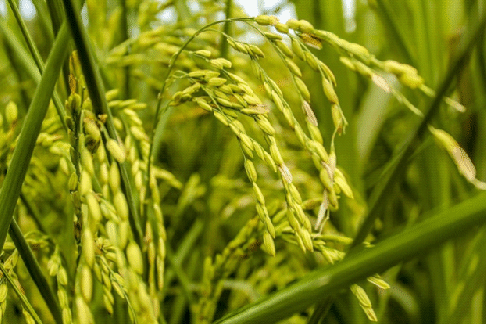SHIPPERS GUIDE
RICE FARMING IN NIGERIA; BEGINNERS GUIDE
Rice Production in Nigeria
Rice production in Nigeria is largely produced by peasant farmers that produce rice mainly for their consumption and have little or none left for sales. The rice produced by the peasant farmers is most times not properly processed. This is because most farmers produce rice for their consumption. Despite that, Nigeria is the highest rice-producing country in West Africa with around 3million tons per annum but also the highest rice importing country globally.
In this case, the percentage of commercial farmers is very small but due to the ever-increasing population, general acceptance and increasing consumption rate, rice production in Nigeria has been greatly enhanced. That is a huge assurance of the profitability of rice farming in Nigeria.
Normally short duration varieties take 100−120 days, medium duration 120−140 days, and long duration 160 days or more. However, most varieties take 60−65 days from panicle initiation to harvest.
How to plant Rice
Firstly, you must get a good quality of seed of the desired that you can get your expected and desirable result; this is because no amount of land preparation or fertilizer application can make a bad seed good.
Choose a planting site
Clay or clay loamy soils are most suited for rice cultivation because soils with good water retention capacity with a high amount of clay and organic matter are ideal for rice cultivation.
Land preparation
Moist the land area; this can be achieved by irrigation or by rainfall. This is to soften the soil and also prevent unwanted weeds from growing.
Plough the land; the purpose of ploughing the land is to soften the earth so that there can be proper root penetration of the soil for proper uptake of nutrients.
Harrowing; is breaking the bowl of the earth formed up during ploughing. It is done to smoothen the soil. This can be done twice to achieve a better result.
Level the land; the purpose of this is to achieve proper distribution of water in all parts of the field. It should be done by a leveler.
Planting Operations.
Planting can be done in two ways
1. Transplanting pregrown seedlings in seedbeds
2. Direct seeding. This involves pre germination of the seeds i.e. complete submersion of seed inside water for 24hours then incubates the seeds for another 24hours.
Then broadcast the seed on the field evenly.
Drain the field; this should be done from 0-9 days after sowing for good seed emergence.
Transplanting
Maintain around 2-3cm water depth to prevent soil hardening and aid seedling pulling. Then uprooting of seedlings should be done by holding the seedling close to the root and then pull towards oneself. The transplanting can be done manually and mechanically with seed spacing 20x20cm in the row and depth of 2-3cm.
Fertilizer Application
Broadcast fertilizer evenly on the field to supply the nutrient needed by the rice to survive the early stage of growth.
Note; Top dressing is done between 35-55 days after planting. It provides Nitrogen, Potassium, Sulphur, Calcium, and Chlorine.
Weed management
Weed can be controlled by spraying herbicides. Spraying can also be done before the plant to prevent the emergence of weed.
Maintain around 2-3cm water depth throughout the planting period to prevent weed germination.
Harvesting
Harvest should be done when 80-85% percent of the grains (rice plants) have turned golden yellow colour to avoid shattering. It could be done manually by using a sickle or mechanically using harvesters. Thresh immediately after harvest to avoid post-harvest losses.
In conclusion, rice farming in Nigeria is still a gold catch and a booming business. Compare to perishable crops, rice has a very low record of post-harvest losses but commercial farmers and proper processing facilities should be encouraged more to increase locally produced rice that meets the global standard provide more jobs, and ultimately cater to the growing population.







